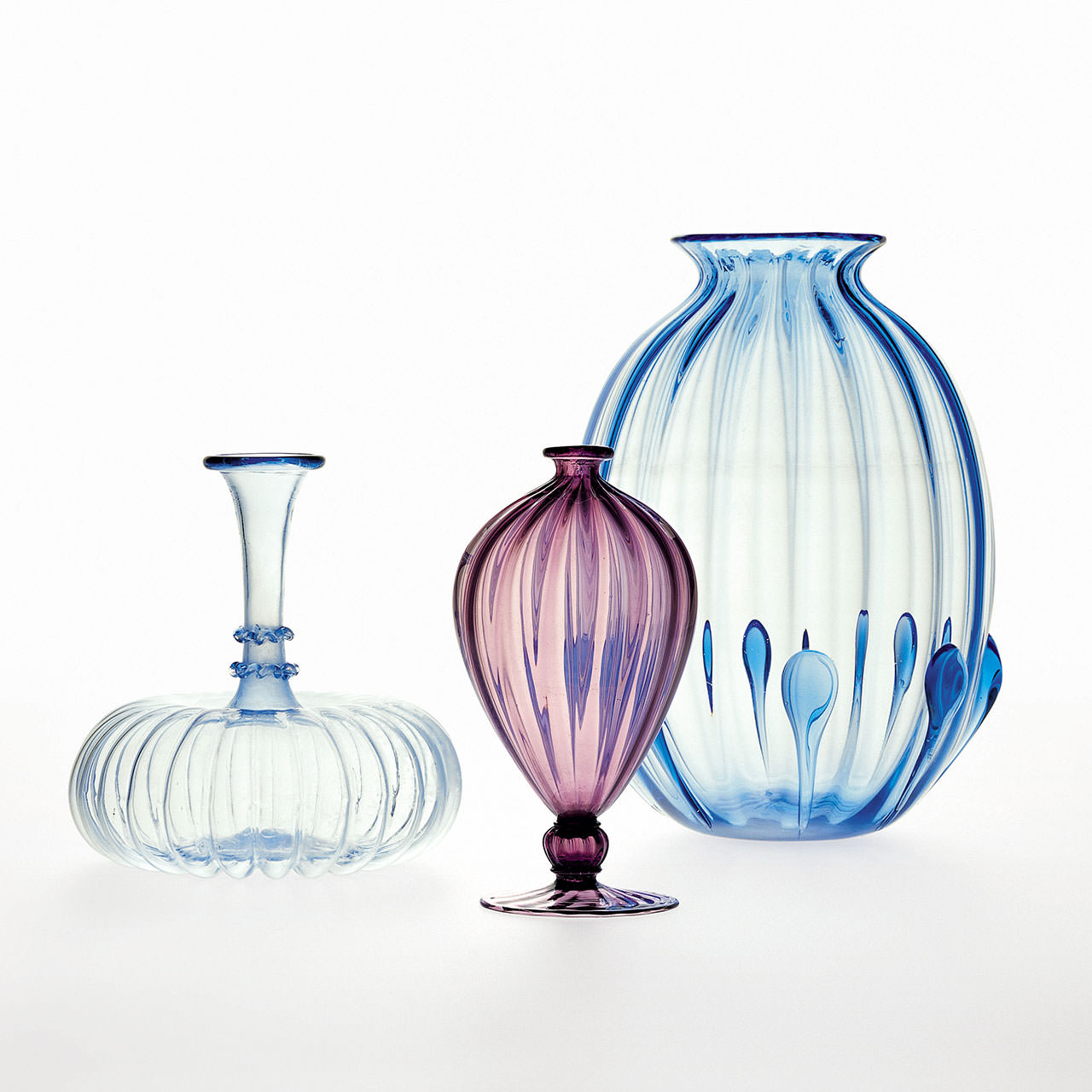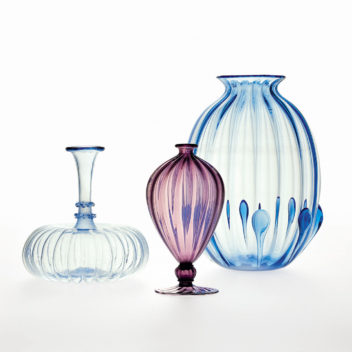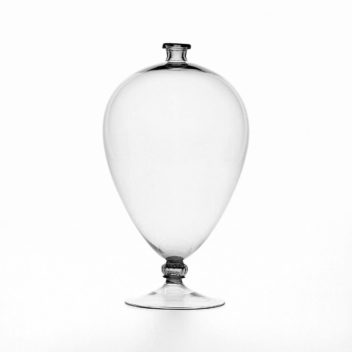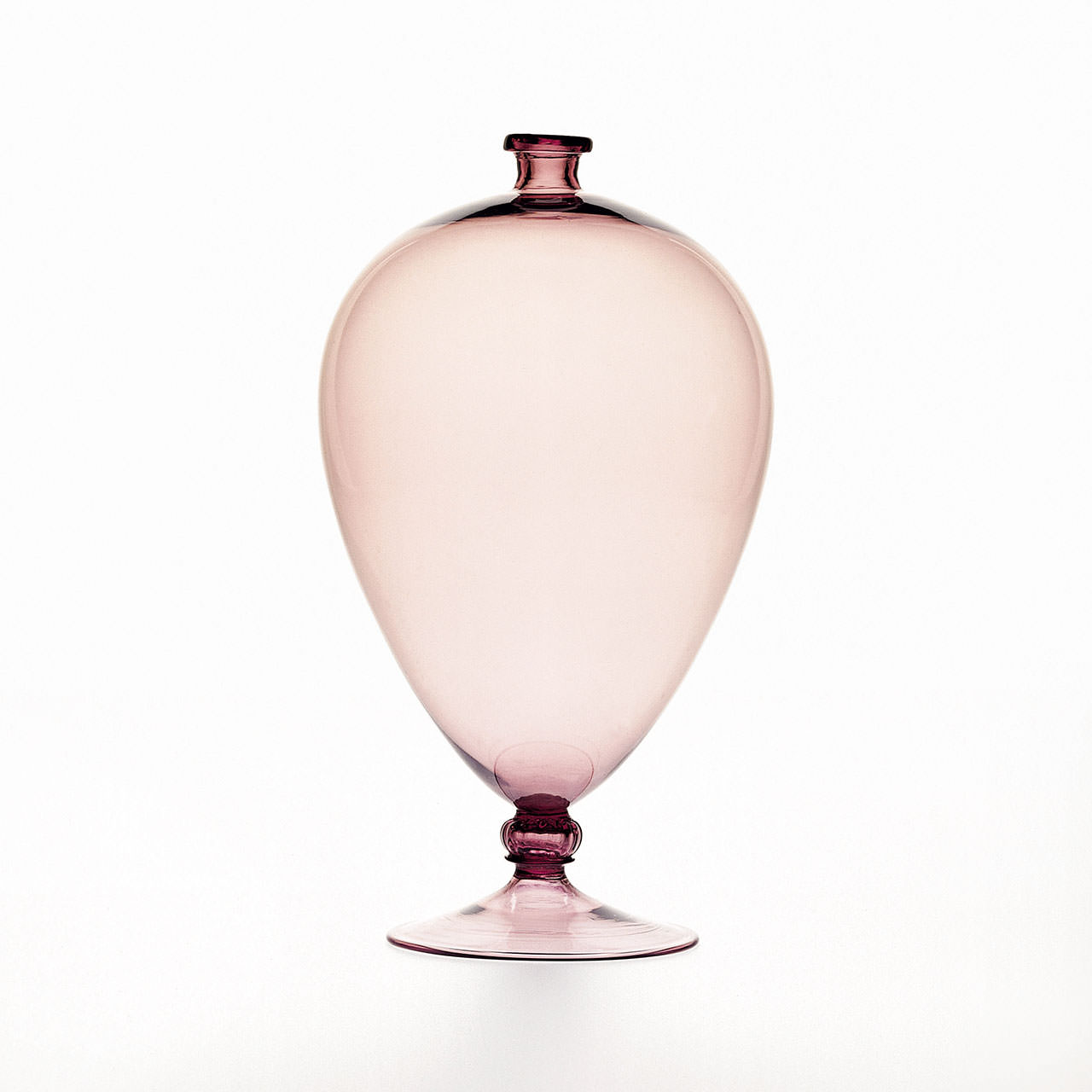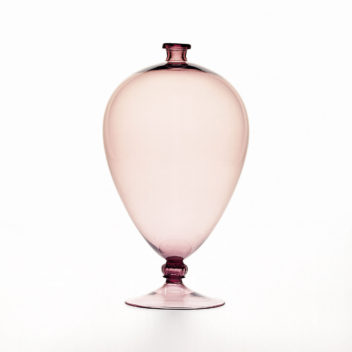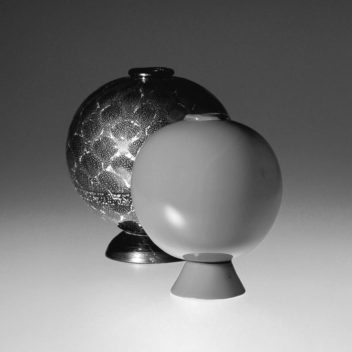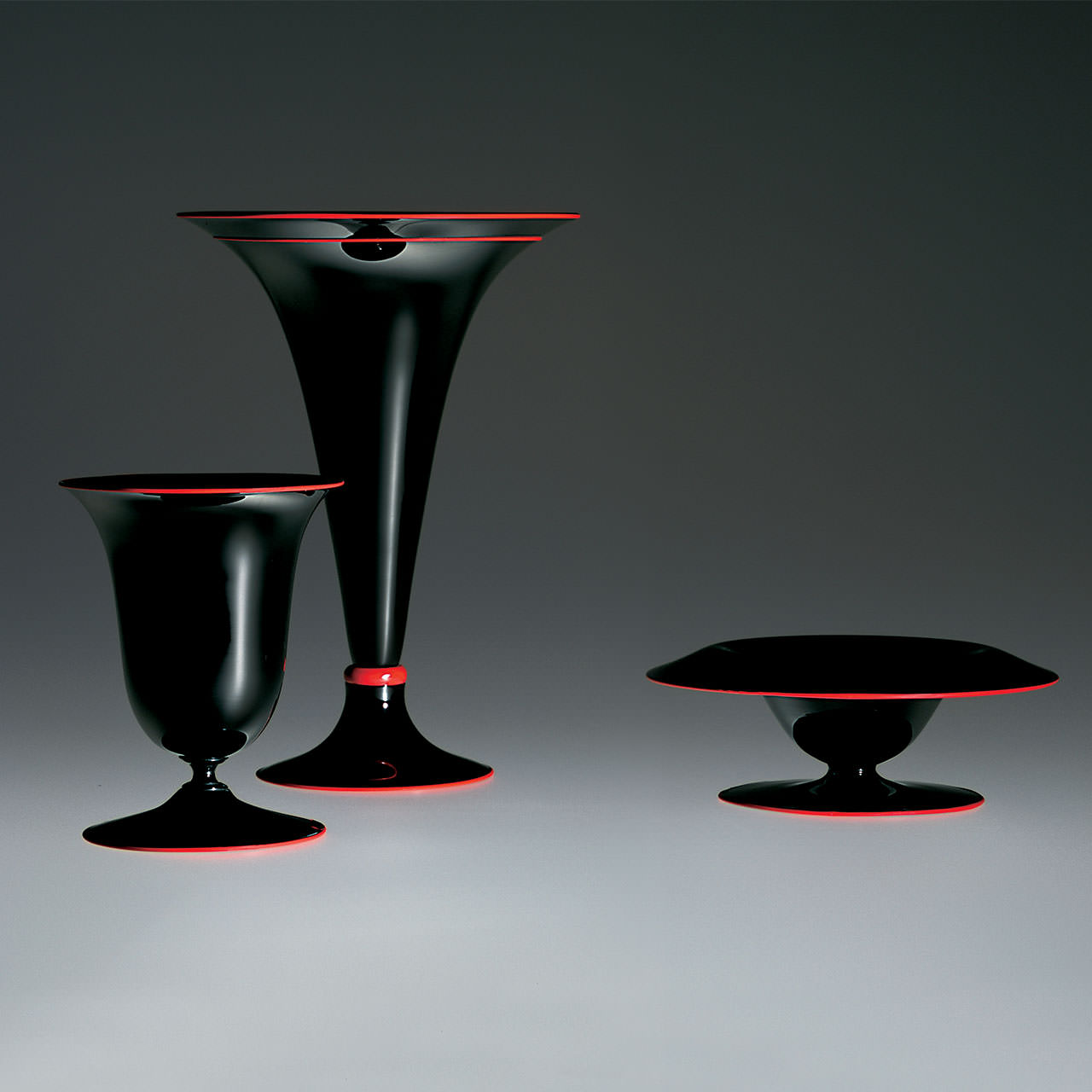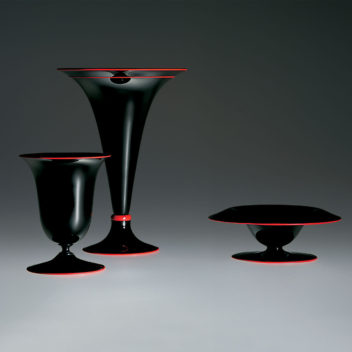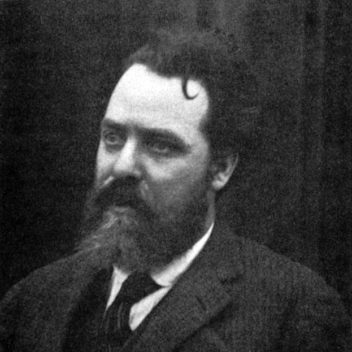
Vittorio Zecchin 1878–1947
Painter, decorator, and designer Vittorio Zecchin was the son of a glassblower from Murano. Upon graduating from the Accademia di Belle Arti di Venezia, he joined the Secessionist movement of Cà Pesaro where he showed his paintings inspired by the Viennese movement on many occasions. In 1913, in Munich, together with Teodoro Wolf Ferrari, he exhibited glass panels and vessels a murrine made by the Artisti Barovier, which represented the attempt to bring the Secessionist style to Murano glass. From 1921 to 1925, he was artistic director of the Vetri Soffiati Muranesi Cappellin Venini & C., where he created lightweight glass pieces, classically inspired and delicately colored, which earned him immediate success in Italy and abroad. Inspired by the styles painted in the works of sixteenth-century painters in the Veneto, these vessels were the first modern works in Murano glass. After a short period as artistic director of the Maestri Vetrai Muranesi Cappellin & C., he collaborated with S.A.L.I.R. in the ’30s, providing drawings for glass engraving and personally decorating glass with enamels. He occasionally worked for Ferro Toso (1930), A.VE.M. (1932), and Seguso Vetri d’Arte (1933-34). At Fratelli Toso (1938), he created the elegant goblets Leggerissimi. During the ’20s and ’30s, Zecchin also designed tapestries, mosaics, embroidery, ceramics, furniture, silverware, all of which he exhibited at the Biennale di Venezia and the Biennale di Monza. During the last years of his life, he dedicated himself to teaching.
